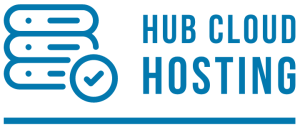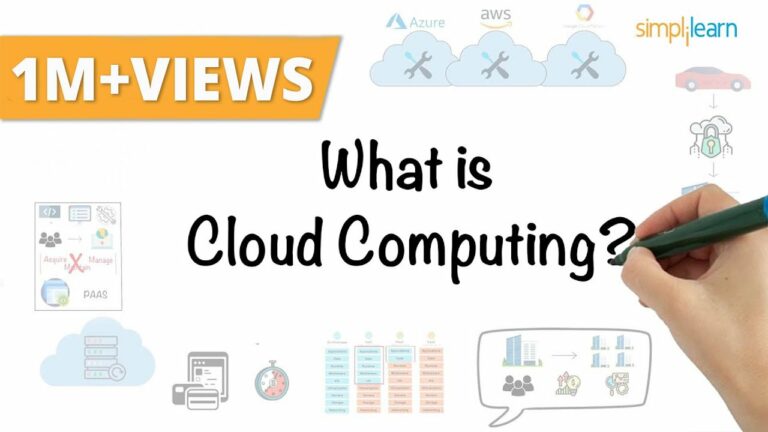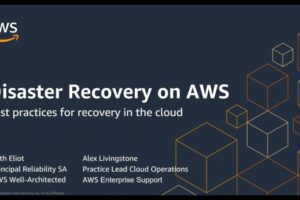“Optimal Configuration for Cloud Hosting: A Comprehensive Guide” offers a detailed examination of best practices and key considerations for achieving the most efficient and high-performing cloud hosting environment. With the rapid growth of cloud computing, organizations of all sizes are increasingly relying on cloud hosting services to meet their IT infrastructure requirements. However, without a proper understanding of the optimal configuration principles, businesses may encounter challenges such as resource wastage, security vulnerabilities, and inefficient performance.
This comprehensive guide aims to address these concerns by providing industry-proven strategies and insights to help organizations optimize their cloud hosting setup, ensuring seamless operations and maximizing the benefits of this transformative technology.
Choosing a Cloud Provider
Evaluating Provider Reputation and Reliability
When choosing a cloud provider, it is crucial to evaluate their reputation and reliability. Look for providers who have a proven track record of delivering high-quality services and meeting customer expectations. Check for customer reviews and testimonials to gauge the level of satisfaction experienced by existing users. Additionally, consider the provider’s uptime guarantee and service level agreements (SLAs) to ensure they can meet your business’s availability requirements.
Assessing Provider Scalability and Flexibility
Scalability and flexibility are essential factors to consider when selecting a cloud provider. Assess the provider’s ability to scale resources up or down to match your fluctuating demands. Look for providers that offer a range of instance sizes and types to accommodate diverse workloads. Additionally, consider the provider’s geographical presence and availability zones, as this can impact latency and redundancy capabilities.
Considering Provider Security Measures
Security is a critical concern when choosing a cloud provider. Evaluate the provider’s security measures to ensure they align with your organization’s requirements. Look for providers that offer encryption options for data at rest and during transit. Assess their compliance certifications and audit reports to verify their adherence to industry best practices and regulatory requirements. Additionally, consider the provider’s incident response and recovery procedures in the event of a security breach or data loss.
Selecting the Right Instance Type
Understanding Instance Types
To optimize cloud hosting, it is essential to understand the different instance types offered by cloud providers. Familiarize yourself with the characteristics and capabilities of each instance type, such as compute power, memory, storage capacity, and networking capabilities. Determine which instance type suits your workload requirements, whether it is a general-purpose instance for everyday applications or a high-performance instance for resource-intensive tasks.
Analyzing Pricing and Performance
When selecting the right instance type for your cloud hosting, consider the balance between pricing and performance. Compare the cost per unit of computing power or storage across different instance types. Be mindful of pricing models, such as on-demand, reserved instances, or savings plans, and choose the most cost-effective option for your workload. Additionally, analyze performance benchmarks and metrics provided by the cloud provider to ensure they meet your performance expectations.
Determining Storage Requirements
Evaluating Storage Options
Determining the appropriate storage options is crucial for an optimal cloud hosting configuration. Evaluate the types of storage offered by the cloud provider, such as object storage, block storage, and file storage. Consider the performance characteristics, durability, and availability of each storage option based on your workload’s requirements. Additionally, assess any additional features like data encryption or lifecycle management that may be essential for your storage needs.
Estimating Storage Size and Performance
To ensure adequate storage capacity and performance, estimate the required storage size and performance for your workload. Analyze your existing data and application requirements to determine how much storage space you will need. Consider factors such as data growth rates, anticipated changes in workload, and any specific storage performance requirements, like input/output operations per second (IOPS) or throughput.
Considering Data Redundancy and Durability
Data redundancy and durability are crucial considerations to protect against data loss or system failures. Assess the level of data redundancy and durability provided by the cloud provider’s storage options. Look for features like data replication across multiple data centers or geographic regions to ensure the availability and durability of your data. Additionally, consider backup and disaster recovery solutions offered by the provider to mitigate the risk of data loss or system failures.
Designing a Scalable Architecture
Understanding Scalability Concepts
When designing a scalable architecture for cloud hosting, it is essential to understand scalability concepts. Horizontal scalability refers to adding more instances to handle increased workload, while vertical scalability involves increasing the resources within a single instance. By designing a scalable architecture, you can accommodate changing demands and ensure consistent performance.
Implementing Horizontal and Vertical Scaling
Implementing horizontal and vertical scaling techniques is crucial for optimal cloud hosting configuration. Horizontal scaling involves distributing the workload across multiple instances, allowing for increased capacity and fault tolerance. Vertical scaling, on the other hand, involves upgrading the resources within a single instance to handle higher workloads. Consider the scalability capabilities offered by the cloud provider and design your architecture accordingly.
Utilizing Load Balancers
Load balancers play a vital role in distributing incoming network traffic across multiple instances to ensure optimal performance and availability. Utilize load balancers provided by the cloud provider to evenly distribute the workload and prevent any single instance from becoming overloaded. This improves response times, enhances fault tolerance, and creates a more efficient and scalable architecture.
Optimizing Network Configuration
Designing a Secure Network Architecture
Designing a secure network architecture is crucial for protecting your cloud-hosted applications and data. Implement security measures such as network access control lists (ACLs), firewalls, and security groups to control inbound and outbound traffic. Consider isolating different network segments using virtual private clouds (VPCs) to enhance security and prevent unauthorized access to sensitive resources.
Choosing the Right Network Type and Configuration
When optimizing network configuration for cloud hosting, carefully choose the right network type and configuration. Evaluate options like virtual private networks (VPNs) for secure remote access, direct connections for dedicated network connectivity, and content delivery networks (CDNs) for efficient content delivery. Select the network configuration that best suits your specific requirements, such as high-speed communication or geographical distribution.
Setting Up Virtual Private Networks (VPNs)
Virtual Private Networks (VPNs) enable secure communication between your on-premises infrastructure and cloud resources. Set up VPNs to establish a secure connection over the internet, ensuring data privacy and integrity. Utilize industry-standard encryption protocols and implement strong authentication mechanisms to protect against unauthorized access.
Implementing Security Measures
Securing Data at Rest and in Transit
Protecting data at rest and in transit is vital for maintaining the confidentiality and integrity of your cloud-hosted applications and data. Implement encryption mechanisms provided by the cloud provider to safeguard data both during storage and transmission. Utilize secure communication protocols (such as HTTPS) for data transmission, and employ encryption methods (like AES) to encrypt data at rest.
Managing Access Control and Permissions
Proper access control and permission management are crucial for ensuring that only authorized individuals or systems can access your cloud resources. Establish granular access controls by implementing user roles, groups, and permissions. Regularly review access privileges and remove unnecessary access permissions to prevent unauthorized access.
Monitoring and Auditing Security
Monitoring and auditing security measures is essential to identify and mitigate potential security vulnerabilities. Implement logging and monitoring systems provided by the cloud provider to track and analyze security-related events. Regularly review log files and audit trails to detect suspicious activities and respond promptly to any potential security breaches. Regular security assessments and vulnerability scans also aid in identifying and addressing potential weaknesses.
Configuring Auto Scaling
Understanding Auto Scaling Benefits and Use Cases
Auto scaling allows you to dynamically adjust the number of instances based on workload demands. Understand the benefits and use cases of auto scaling to optimize resource utilization and ensure consistent performance. Auto scaling can help manage sudden traffic spikes, accommodate fluctuating workloads, and reduce costs by eliminating the need for maintaining excess resources.
Configuring Auto Scaling Policies and Parameters
Properly configuring auto scaling policies and parameters is crucial for effective auto scaling. Define scaling policies based on metrics such as CPU utilization, network traffic, or application response time. Set thresholds and rules that trigger scaling actions, such as launching additional instances or removing underutilized ones. Regularly review and adjust auto scaling policies to ensure they align with your evolving workload needs.
Monitoring Auto Scaling Activities
Monitoring auto scaling activities is important to ensure the effectiveness of your auto scaling configuration. Utilize monitoring tools provided by the cloud provider to track scaling events, resource utilization, and performance metrics. Analyze the data collected and make informed decisions regarding your auto scaling configuration, such as fine-tuning scaling policies or optimizing resource allocation.
Managing Backup and Disaster Recovery
Implementing Regular Data Backups
Data backups are essential for mitigating the risk of data loss and facilitating disaster recovery. Implement a regular backup strategy that aligns with your recovery point objective (RPO) and recovery time objective (RTO). Utilize automated backup tools and features provided by the cloud provider, ensuring that backups are securely stored and readily accessible for recovery purposes.
Setting Up Disaster Recovery Solutions
Disaster recovery solutions are crucial for minimizing downtime and ensuring business continuity in the event of a system failure or catastrophic event. Design and implement a disaster recovery plan that includes redundant systems, data replication, and failover mechanisms. Leverage the disaster recovery services offered by the cloud provider to replicate your infrastructure and data across multiple regions for increased resiliency.
Testing Backup and Recovery Procedures
Regularly test your backup and recovery procedures to validate the effectiveness and reliability of your disaster recovery plan. Conduct periodic recovery drills and simulate various failure scenarios to ensure that your backup data is intact and can be successfully restored. Make necessary adjustments and improvements to your backup and recovery procedures based on the outcomes of these tests.
Monitoring and Performance Optimization
Implementing Performance Monitoring Tools
Performance monitoring tools are essential for identifying bottlenecks, optimizing resource utilization, and ensuring optimal performance of your cloud-hosted applications. Leverage the monitoring and analytics capabilities provided by the cloud provider to track performance metrics such as CPU utilization, memory usage, network throughput, and application response times. Use these insights to identify performance issues and make informed optimization decisions.
Analyzing Performance Metrics and Bottlenecks
Analyze performance metrics and identify performance bottlenecks to optimize your cloud hosting configuration. Use monitoring data to pinpoint areas of resource contention, high latency, or inefficient code. Address these bottlenecks by adjusting resource allocation, optimizing database queries, or optimizing application code. Continuously monitor performance metrics to track the effectiveness of your optimizations.
Applying Optimization Techniques
Apply optimization techniques to enhance the performance of your cloud-hosted applications. Optimize your code for efficiency, review database configurations and indexes for improved query performance, and leverage caching mechanisms to reduce response times. Consider using content delivery networks (CDNs) to serve static content efficiently. Regularly review and fine-tune your optimization techniques based on your application’s evolving requirements.
Considering Cost Optimization
Monitoring and Optimizing Resource Utilization
Monitoring and optimizing resource utilization is crucial for controlling costs in cloud hosting. Utilize monitoring tools to track resource usage and identify any underutilized resources. Adjust your resource allocation based on actual workload demands to eliminate waste and optimize cost efficiency. Regularly review resource utilization metrics and fine-tune your configuration to minimize unnecessary costs.
Utilizing Reserved Instances or Savings Plans
To optimize costs, consider utilizing reserved instances or savings plans offered by cloud providers. Reserved instances provide a significant discount in exchange for committing to a particular instance type for a specified term. Savings plans offer flexible discounts on compute usage, providing cost savings for consistent workloads. Evaluate your workload’s predictability and usage patterns to determine the most cost-effective option for your specific needs.
Analyzing Cost Saving Opportunities
Continuously analyze cost-saving opportunities in your cloud hosting configuration. Look for inefficiencies or areas of redundant spending. Optimize storage sizes, delete unused resources, and optimize data transfer costs. Leverage cloud provider-specific tools and recommendations to identify further areas for cost optimization. Regularly assess your cost-saving strategies and adjust as needed to ensure ongoing cost-efficiency.








